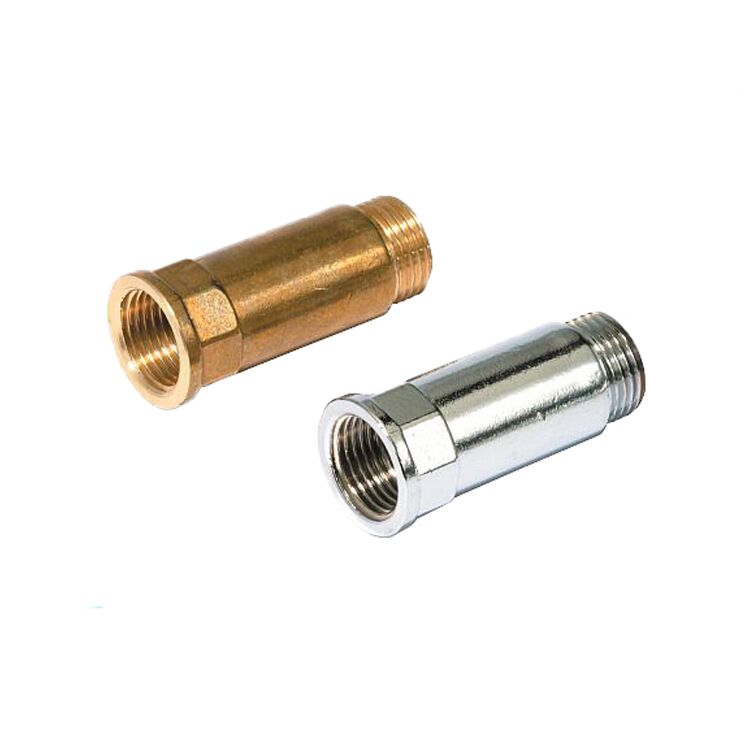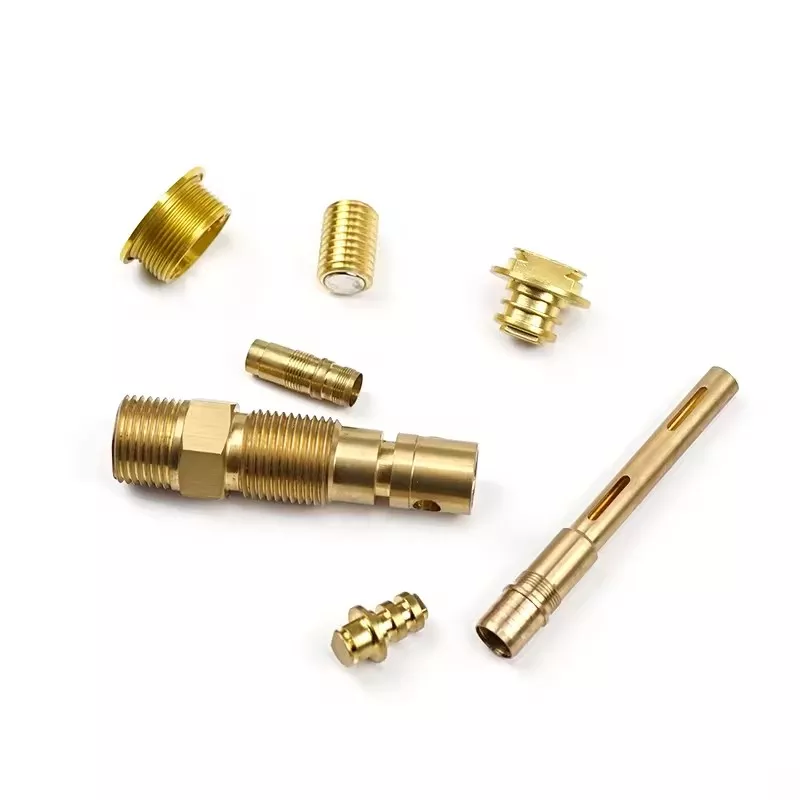What is Brass Made of: Composition, Properties, and Applications
 May 08,2024
May 08,2024

Brass is an essential alloy in manufacturing, known for its resilience and versatility. At Tuofa, we specialize in utilizing brass in our CNC machining processes, ensuring that we meet the diverse needs of our clients with precision-engineered brass components.
Chemical composition of Brass
The primary constituents of brass are copper and zinc. Copper gives brass its natural corrosion resistance and excellent thermal properties, while zinc increases its strength. The balance between copper and zinc can be adjusted to create brass with specific characteristics for different applications.
|
Element |
Typical Percentage Range |
Purpose in Alloy |
|
Copper (Cu) |
55% to 90% |
Provides strength and ductility, affects color |
|
Zinc (Zn) |
10% to 45% |
Adds hardness, lowers melting point |
|
Lead (Pb) |
Up to 3% |
Enhances machinability (used in free machining brass) |
|
Tin (Sn) |
Varies |
Improves corrosion resistance and strength |
|
Nickel (Ni) |
Varies |
Increases strength and corrosion resistance |
|
Iron (Fe) |
Varies |
Enhances strength and durability |
|
Aluminum (Al) |
Varies |
Provides strength and corrosion resistance |
Copper
Provides natural corrosion resistance and excellent thermal properties.
Zinc
Increases strength; balance with copper can be adjusted for specific needs.
Lead
Often added for improved machinability; enhances ease of forming complex shapes.
Common Variants and Additives
Brass is often modified by adding other elements like lead,particularly when improved machinability is required. This makes brass easier to machine into complex shapes,which is crucial in manufacturing high-precision parts. Other additives may include tin for strength or nickel for additional corrosion resistance.Specific discussions include:

Red Brass
Often used in plumbing and contains a higher percentage of copper,also known as C23000 brass in the US,typically contains around 85% copper,15% zinc,and a small amount of lead (2-3%).Color is red,It has a reddish hue due to its higher copper content compared to other brass varieties.
Yellow Brass
Commonly found in musical instruments,Yellow brass typically contains 65-85% copper and 15-35% zinc. Lead content is usually minimal or absent.Color is Yellow,It has a golden yellow appearance, characteristic of most people's image of brass.
There is such a big difference between red brass and yellow brass, I believe every engineer and designer is curious.
White Brass
Used for its decorative appearance, often in jewelry,White brass, also known as nickel silver, is not technically a true brass as it doesn't contain any zinc. Instead, it's an alloy of copper (typically 55-70%) and nickel (18-25%) with additions of other elements like zinc or manganese.Color is White ,It has a silvery-white appearance.
Brass classification
Brass is classified based on its composition and the properties that result from these variations. Here are the main types:
Common brass
This widely used type contains 65-85% copper, offering a balance of ductility, strength, and corrosion resistance.
High-zinc brass
With its 36-42% zinc content, high-zinc brass excels in ductility and machinability, making it suitable for complex shapes.
Complex brass
The addition of elements like lead, tin, nickel, or aluminum to brass imparts specific properties, such as improved machinability, enhanced strength, or better corrosion resistance for specialized applications.
Properties of Brass
Brass is well-regarded for its unique combination of properties that make it suitable for a wide range of applications. Here are some of the key properties:

Mechanical Properties
Brass is well-regarded for its strength, durability, and malleability. These characteristics make it an excellent choice for manufacturing robust and reliable components that need to withstand mechanical stress and wear.
Machinability
Brass possesses excellent machinability, meaning it can be easily shaped using various machining techniques like turning, milling, and drilling. This property allows for the creation of precise and intricate brass parts for diverse applications.
Ductility and Malleability
One of the most defining traits of brass is its exceptional ductility and malleability. This means brass can be easily shaped into various forms without breaking or cracking. This property makes it ideal for applications requiring intricate details.
Corrosion Resistance
Brass offers good resistance to corrosion, particularly in dry environments. This property makes it a reliable choice for applications exposed to regular wear and tear.
Alloy Enhancements
While copper and zinc form the core, adding small quantities of other elements can significantly enhance specific characteristics, making brass even more adaptable for diverse applications. Influence of tin, nickel, and other elements on properties.
It's important to note that the specific properties of brass can vary depending on the proportions of copper and zinc, as well as the presence of additional elements like lead, tin, or nickel. However, the core characteristics discussed above remain the key strengths that have propelled brass to its prominent position in various industries.
The Application of Brass
Brass is utilized across multiple industries due to its excellent properties, making it an incredibly versatile material. Here are some prominent applications:

Architectural Hardware
Brass is extensively used in doorknobs, hinges, faucets, and other architectural hardware, providing a combination of functionality and aesthetic appeal.
Manufacturing Components
Brass is employed to manufacture a wide range of components, including gears, valves, fittings, bolts, and screws, due to its strength, machinability, and corrosion resistance.
Musical Instruments
Brass is a crucial material for musical instruments like trumpets, trombones, French horns, and tubas. Its acoustic properties and ability to be shaped into intricate forms make it ideal for producing rich, resonant sounds.
Decorative Items
brass is favored for its aesthetic qualities in decorative items and architectural trim. Its golden color and sheen make it popular for fittings and detailed ornamental work.Brass decorative accents, jewelry, and furniture embellishments, adding a touch of elegance and warmth to interiors.
Plumbing fixtures
Brass faucets and shower components resist corrosion from water exposure, ensuring long-lasting performance.
Marine applications: Brass fittings and components used in boats can withstand the harsh saltwater environment.
Heat sinks
Brass components can effectively transfer heat away from electronic devices, preventing overheating.
Machinability and Aesthetics
Brass is not only easy to machine; it also provides a visually appealing finish, making it a favorite for both functional and decorative parts. Brass boasts a distinctive golden appearance that adds a touch of elegance and sophistication to any application. Tuofa leverages these properties to deliver components that meet both technical and aesthetic standards.
Electrical and Electronic Components
Brass finds applications in electrical wires, cables, connectors, and circuit boards due to its good electrical conductivity and machinability.Brass also exhibits good thermal and electrical conductivity and excellent corrosion resistance. These properties make it particularly useful in electrical and plumbing applications, where materials must perform reliably over long periods under varying environmental conditions.
The Disadvantages of Brass
While brass is widely used and celebrated for its many beneficial properties, it also has some limitations that can affect its suitability for certain applications. Here are the main disadvantages:
Corrosion
Susceptible to dezincification and stress corrosion cracking, particularly in moist environments.
Conductivity
Lower electrical and thermal conductivity compared to other metals like copper.
Machinability and Safety
Brass is well-regarded for its excellent machinability, making it a popular choice at Tuofa CNC Machining for creating intricate components efficiently. However, safety considerations are crucial due to certain characteristics of brass:
Brass Machinability
Ease of Machining: Brass allows for high-speed machining, which enhances productivity and reduces tool wear, saving on costs and extending the life of machinery.
Surface Finish: It often produces a superior surface finish, minimizing the need for additional processing.
Safety Concerns
Some brass alloys contain lead to improve machinability. This can pose health risks during machining as lead particles may become airborne, necessitating strict safety measures.
Metal Fume Fever: Machining brass, especially at high temperatures, can release zinc oxide fumes. Inhaling these fumes can lead to metal fume fever, a temporary but severe flu-like condition.
Safety Practices at Tuofa CNC Machining
Lead-Free Alloys: We prioritize the use of lead-free brass to avoid health risks.
Protective Measures: Implementing comprehensive safety training, proper ventilation, and protective equipment is essential to safeguard our workers.
At Tuofa CNC Machining, ensuring the safety of our team while maintaining high standards of efficiency
Cost
Price varies with copper content; high copper prices can make brass expensive.
Strength
Not suitable for high-stress applications where more durable materials are required.
At Tuofa CNC Machining, we consider these factors to guide you in selecting the best material for your needs, ensuring optimal performance and cost-efficiency.
Cost-Effectiveness and Sustainability
Affordability: Brass' durability and cost-effectiveness make it ideal for manufacturing.
Recycling and Environmental Impact: Discusses the recyclability of brass and its environmental considerations.
Conclusion
The significance of brass in the manufacturing sector cannot be overstated. Its comprehensive application range and the ability to meet the demanding conditions of various industries make it invaluable. At Tuofa, we are committed to maintaining the highest standards in our CNC machining processes, focusing on brass components to meet and exceed our client's expectations. For more detailed information and inquiries, please visit our website at www.tuofa-cncmachining.com.
 Tel/WeChat:
Tel/WeChat:  Email:
Email: 
 Home
Home
 15 Things You Didn't Know About Brass Alloy
15 Things You Didn't Know About Brass Alloy 







